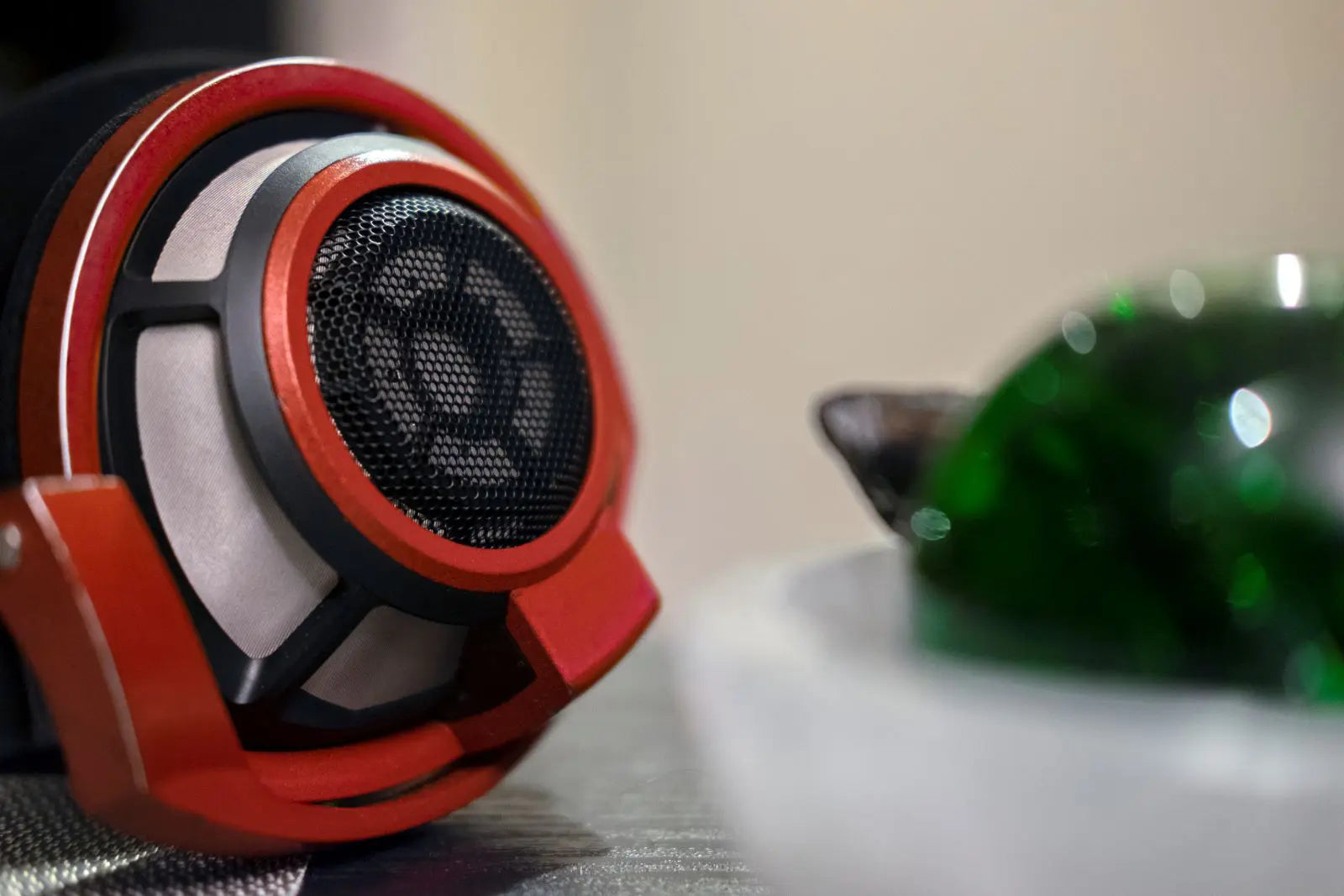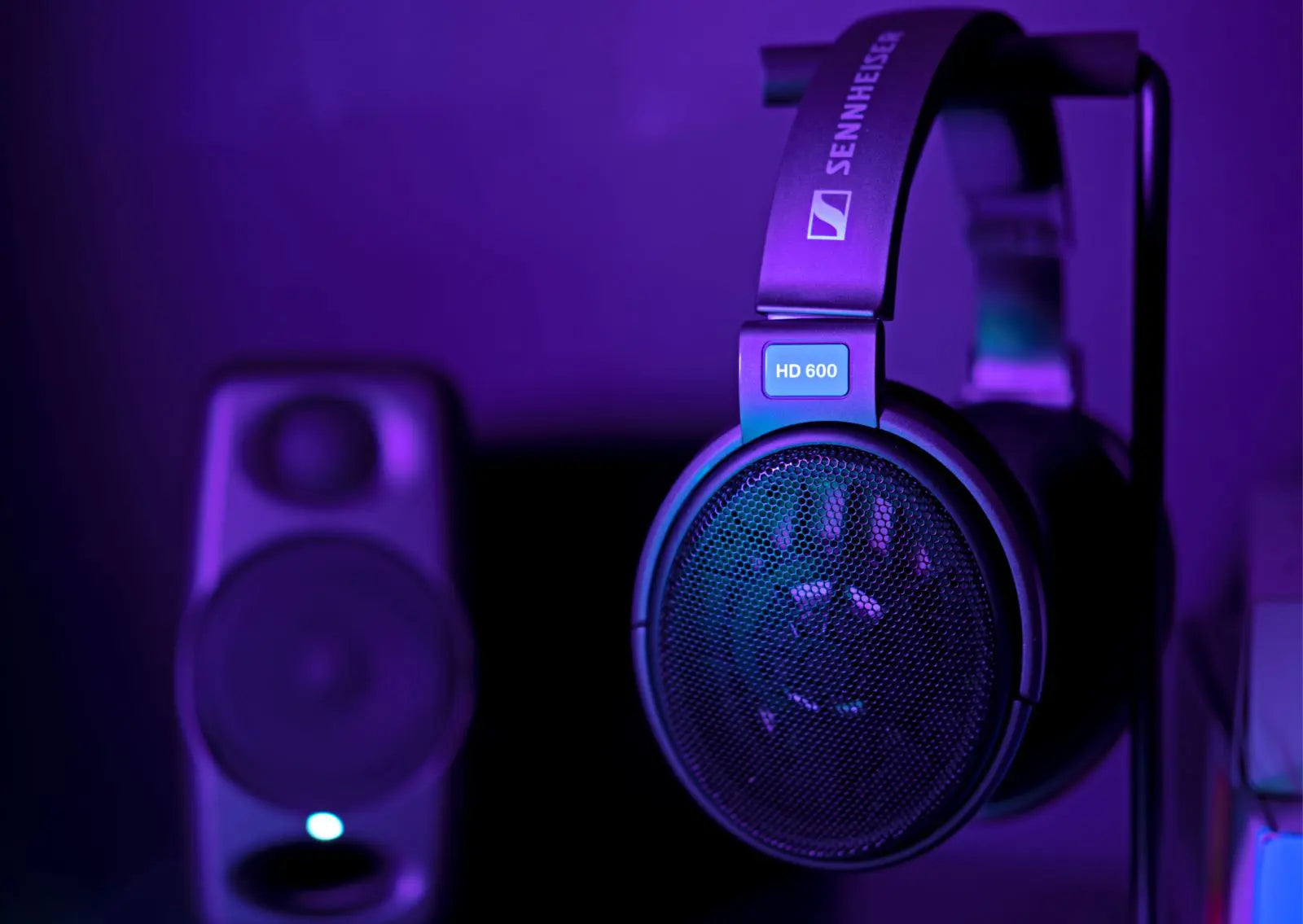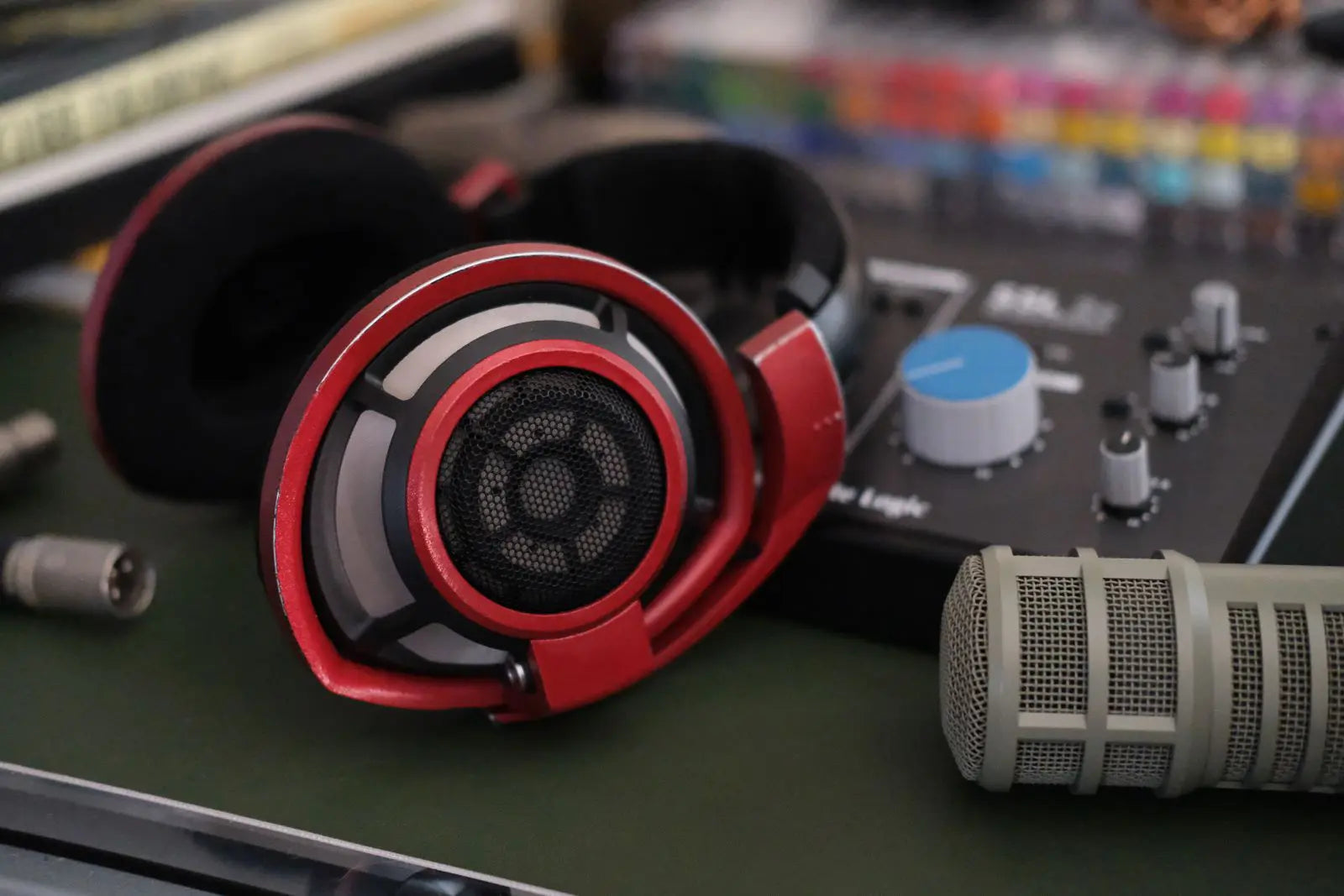Best Headphones for Mixing Audio (2023)

If you’ve been around the audiophile or pro audio scene for a while, the title might be a bit of a head-scratcher. I know what you’re probably thinking…
(Shocked Pikachu face): “What?? Mixing on headphones? Shouldn’t you only mix using speakers?”
While the simple answer has always been “Yes, you should do most of your mixing in speakers,” I’ve thought for a long time that there are convincing arguments for doing a significant amount of the mix process in headphones. As time has marched on, and consumer listening time has tilted away from 2-channel and towards headphone listening, those arguments have only become more compelling.
I’ve mixed and composed audio in some capacity or another (studios, live shows, podcasts, etc.) for more than 10 years now, so I feel qualified to present these arguments. I’m going to first cover why you shouldn’t mix in headphones. Then I’ll tell you why I think you should anyway, and about my favorite headphones for the job, what they get right, and what they get wrong.
Why You Shouldn’t Mix on Headphones
It is a simple fact that until the last decade or two, all music has been mixed in stereo. When I say “stereo” I don’t just mean “left and right,” I mean “based on a left and right speaker in the same room as the listener.”
This distinction matters because in headphones, we are never listening to actual stereo. We are listening to whatever happens when you take a proper 2-channel stereo mix, and forcibly and indelicately smush it into a binaural listening medium. As such, we arrive at the main reason you shouldn’t mix in headphones: Spatial cues in headphones have no consistent relationship to a proper two channel stereo setup.

One of the most critical tools in an audio mixers toolkit is “panning,” which determines how far to the left or right an object is placed. This is done by adjusting the volume difference between the two channels, and how far right or left something is panned is determined by the degree of difference in volume between left or right. If a signal has more volume in the right channel than left channel, this means the signal will sound panned to the right (and vice versa).
Not only does the panning that makes for stereo cues translate unintuitively to headphones, but the differences in perceived panning/separation also seems to vary significantly between models/types of headphones. I don’t think anyone would disagree that headphones tend to image differently than IEMs, while both of these image very differently than speakers. For these reasons, making judgment calls about spatial mixing will always have to be taken with a massive grain of salt on headphones.
Why You Should Mix on Headphones
With that big caveat out of the way, I actually think most of the other aspects of audio mixing (editing, tonal balance, dynamic balance, sound effects etc.) can be handled with a reasonable amount of certainty in headphones. They may even be better for some of these aspects than speakers are!
For example, when editing and scouring the track for mistakes that we’d rather listeners not hear, I find headphones to be significantly better at highlighting these faults. This is due of course to the fact that they’re much closer to the ear, in addition to the fact that most headphones have some level of isolation, lowering the noise floor and allowing for better discernment of signal full-stop.
Additionally, I’ve found that good headphones (like the ones mentioned here) are simply better tuned from a frequency response perspective than most speakers. Especially when you consider that most speakers in most untreated or barely-treated rooms are absolutely riddled with massive swings in SPL below 1kHz due to room modes.

The benefits go on! Most people these days are actually listening to music through headphones and earphones, so there’s an argument to be made that mixing for sounding good on headphones should be a greater priority than 2-channel stereo mixing. If it’s about crafting a mix for the exact listening experience of your audience, headphones are definitely going to be the more commonly used peripheral.
There are also practical concerns. It’s also doubtlessly true that studio monitoring speakers take up a lot more space than a pair of headphones does. They also won’t bother your neighbors, or wake up a sleeping roommate/partner in the other room… who unlike most audio mixers sleeps at normal times while people like me stay up into the wee hours tweaking compressor settings.
What Are the Best Mixing Headphones (No EQ)?
Mixing on headphones clearly has benefits—but only if you choose the right pairs for the job!
It may surprise absolutely no one, but my pick for the best studio headphone sans EQ is the one of the only headphones that has had just as much of an impact in pro audio as the audiophile space.
Sennheiser HD 650 and HD 600
The HD 600 and HD 650 still remain the most natural, “good speaker”-like midrange available in headphones today. The fact that the HD 600 came out in 1997 and is still the king of midrange faithfulness means that the discussion around mixing headphones has seemingly always had this lineup at or near its center. It still continues to be the default recommendation after all this time, enough so that I’m confident the sound of the HD 600/650’s midrange is the sound of “correctness” to a lot of mix and mastering engineers. That’s not even touching on the fact that the treble is also one of the smoother presentations found in headphones.

Secondly, they also happen to be one of the lightest, most durable, and most comfortable (to me) pairs of headphones you can buy. They’re certainly miles ahead in comfort compared to common studio workhorses like the Audio-Technica ATH-M50x, Beyerdynamic DT770, and Sony MDR7506.
While I personally adore HD 600/650 for casual listening as well as pro audio work, they definitely have at least two caveats that make them not 100% perfect.
The first is that they have pads that wear incredibly quickly compared to other headphone pads. If you use them every day for multiple hours, they will be noticeably smushed by the 3 month mark. Their pads are also incredibly acoustically significant—they play a large part in how the headphone sounds. Due to this, their treble response in particular is always going to be somewhat of a moving target, and you may start to hear differences in the response after only a month or two of use.
Lastly, they roll off rather steeply in the bass just past the 100Hz mark. This is their biggest downside for this task, as it makes them nearly unusable (alone) for a wide variety of modern genres like hip hop, R&B, and most types of electronic music.
However, if you’re mixing acoustic music like rock, singer/songwriter, country, indie, folk, or classical, I think HD 600 is easily the best headphone you can use for mixing without EQ…

Audeze MM-500
If you’re doing audio mixing, need the bass extension, but definitely don’t want to futz with EQ, then the Audeze MM-500 is the natural choice for the task.
One big caveat for the MM-500 though is cost. $1699 can buy some truly excellent studio monitoring speakers, a subwoofer, as well as a measurement mic and some room treatment as well. Another potential problem is that, as much as I enjoy using MM-500, the comfort is known to be hit-or-miss for many people due to the fact that it has a significantly tight clamp force. As someone who truly believes comfort is an under-represented metric in our community discourse, I feel it’s crucial to mention this.
Finally, I think that even if you did EQ it, the MM-500 isn’t quite perfect for evaluating changes to elements that token dynamic range (using compressors/expanders, as well as delay/reverb). It highlights the attack quite nicely and actually extracts additional nuance there, but decay is a little inconsistent in how it correlates to speakers, in my experience.
All of that said, while I don’t think the midrange or treble are quite as good as the HD 600 and 650, it is still very good in this respect. In fact, I’d concede that the bass extension actually makes the MM-500 a more versatile headphone for this task overall.

MM-500 is marketed towards audio professionals, and I think the value proposition they offer is reasonable. Especially when you consider you can have speaker-like midrange, full bass extension, and smooth(ish) treble in a device you can throw in a bag and use in hotel rooms, tour buses, and even in studios when you don’t want the sound to change based on your position relative to speakers.
Both are excellent options; I just think the HD 600 and 650 are much more accessible at roughly one-fifth the cost and as such should probably be the first thing people look for when searching for a headphone for mix referencing.
What Are the Best Mixing Headphones (with EQ)?
You may wonder why I’ve made an effort to point out that my first set of recommendations were sans EQ, and the reasoning is simple: Even if this is for a specific class of listener that is absolutely familiar with how to EQ, they may not know how to EQ their headphones!
Headphone EQ is a different set of common practices and goals, as well as a different set of limitations to work around to meet those goals. It actually took being a few years deep into the audiophile hobby (about 1/5th the amount of time I’d already spent in professional audio) for me to understand how to best balance the limitations of headphone EQ and deliver something adequately “referential”.
If we’re allowing for EQ, I think the answer may yet again be obvious. It’s perhaps one of the only other open-back headphones that has a decade-long history in studios, usually used in a reference capacity.

Sennheiser HD 800 and HD 800S
While the HD 600 is the king of midrange accuracy, the Sennheiser HD 800S is by contrast… not really the king of anything related to its tuning. It doesn’t have linear bass extension, it doesn’t have a very true-to-life midrange, and its treble is frankly pretty harsh and hard to enjoy in its stock formation.
But for all of its tonal faults, the HD 800S is probably the single best mixing headphone out there for use with EQ.
It’s a stunningly-built, professional-grade product, with some of the lowest unit variation in the entire headphone market, due to incredibly tight production tolerances. Its massively roomy earcups basically eliminate the problem of pinna (outer-ear) deformation, which can also change the sound dramatically from person-to-person.
To that point, the consistency of tonal response on different heads is also one of the best in the world, owing to its incredibly low acoustic output impedance (it reacts minimally to the “load” presented by the ear).
The HD 800S also has shockingly low harmonic distortion in the bass for an (extremely) open-backed dynamic driver headphone, and as such EQing the bass up for full linear extension—or even a bass shelf—is quite easy to do.
These factors together make HD 800S one of the few headphones out there where you really don’t have to worry that your EQ corrections may not be accurate based on someone else’s measurement of the same type (but not same unit) of headphone, as long as the measurement you’re using is done on an industry standard measurement rig and personalized by ear above 4-5kHz.

Anyone who has an HD 800S can (and probably should) find a publicly available EQ profile—like this measurement from our very own Resolve—and have the tonal character of a well-treated, good sounding speaker setup on your head basically whenever you want.
As far as caveats go for the HD 800S, it’s genuinely hard to think of many for this task. EQ solves basically every problem I have with the sound of it, and the build/comfort is among the best in the entire headphone market.
While HD 600 is best used for acoustic music, if you’re EQing an HD 800S you can use it for any music. It’s the most versatile option on this list once EQ is a factor, and it’s the one I choose to use every time I open up Logic Pro X and work on music because it combines all of these sonic aspects with a build and comfort that is even better than the already quite good comfort of its sister HD 6x0 series.
Conclusion
Of course, I still advocate fully for people using their studio monitor speakers for a large percentage of the mixing process. Panning is still a massive issue in headphones, and I find the evaluation of dynamics to also be a mixed bag depending on the headphone you use.

That being said, I think we’re in a much different space than we were 20 years ago when the axiom “never mix on headphones” was commonplace. People are listening on headphones more than they ever have, and I don’t see this trend slowing down at all.
Like with any headphone or speaker, how well you know the idiosyncrasies of the listening peripheral is arguably just as important as the quality of the peripheral itself. Making sure you are starting from the best possible place can take tons of guesswork out of the equation. The best mix headphone gives any mix engineer the certitude to make quick, confident decisions that won’t give them any surprises when they check their mix on the main monitors, in the car, or on their AirPods. For that set of needs, I’m confident that an HD 600/650, MM-500, or a well-EQed HD 800 or HD 800S will get many people most of the way there.
